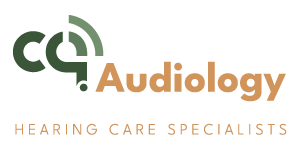
There are three main types of hearing loss you’ll need to understand. Conductive hearing loss affects your outer or middle ear, often causing muffled sounds due to blockages or structural issues. Sensorineural hearing loss involves inner ear damage, making it hard to detect high-pitched sounds. Mixed hearing loss combines both types, impacting multiple parts of your ear. Learning about each type’s unique symptoms and treatments can help you take the right steps forward.
Understanding Conductive Hearing Loss
Many cases of conductive hearing loss stem from problems in your outer or middle ear that prevent sound waves from properly reaching the inner ear. Common causes include ear wax buildup, foreign objects, ear infections, fluid accumulation, or structural abnormalities in the ear canal or eardrum.
You’ll typically notice sounds becoming muffled or seeming quieter than normal. While some forms of conductive hearing loss are temporary and can be treated with medication or minor procedures, others may require surgery. If you’re experiencing ear pain, drainage, or sudden hearing loss, it’s important to seek medical attention promptly.
The good news is that conductive hearing loss often responds well to treatment. Your doctor can remove blockages, treat infections, or recommend surgical options to repair damaged structures in your ear.
Exploring Sensorineural Hearing Loss
Unlike conductive hearing loss, sensorineural hearing loss occurs when there’s damage to your inner ear or auditory nerve. This type of hearing loss is often permanent and can result from aging, exposure to loud noises, certain medications, or genetic conditions.
You might notice difficulty understanding speech, especially in noisy environments, or find that sounds seem muffled. High-pitched noises may become particularly hard to detect, and you may experience tinnitus – a ringing or buzzing sensation in your ears.
While there’s no cure for sensorineural hearing loss, you can manage it effectively with hearing aids or cochlear implants. Early detection is crucial, so if you’re experiencing symptoms, it’s important to consult an audiologist for proper diagnosis and treatment options.
Mixed Hearing Loss Explained
A combination of both conductive and sensorineural hearing loss, mixed hearing loss affects both your outer/middle ear and your inner ear or auditory nerve. You might experience this type of hearing loss if you have damage to multiple parts of your auditory system.
The causes can include head trauma, chronic ear infections, genetic factors, or aging. You’ll often notice difficulty hearing both soft and loud sounds, and you may struggle with sound clarity. Since mixed hearing loss involves multiple areas of the ear, your treatment will likely require a combined approach.

Your audiologist might recommend hearing aids along with medical interventions like surgery or medication, depending on the specific causes. It’s essential to get a thorough evaluation to determine which parts of your hearing system need treatment.
Symptoms and Warning Signs
Recognizing hearing loss early can help prevent further damage and improve treatment outcomes. You might notice yourself frequently asking others to repeat themselves or struggling to understand conversations in noisy environments. Pay attention if you’re turning up the TV volume higher than usual or having trouble hearing high-pitched sounds like birds chirping or children’s voices.
Watch for signs like difficulty following group conversations, feeling that people are mumbling, or experiencing ringing in your ears. You may find yourself avoiding social situations or feeling more tired than usual from straining to hear. Physical symptoms can include ear pain, pressure, or discharge. If you’re experiencing any of these symptoms consistently, it’s important to schedule an appointment with a hearing healthcare professional for proper evaluation.
Treatment Options and Solutions
Treatment for hearing loss depends largely on the type and severity of your condition. If you’re experiencing conductive hearing loss, your doctor may recommend medication, surgery, or ear wax removal. For sensorineural hearing loss, hearing aids are often the primary solution, ranging from basic models to advanced digital devices.
For profound hearing loss, cochlear implants might be your best option. These electronic devices bypass damaged parts of your inner ear to directly stimulate the auditory nerve. You’ll also benefit from learning communication strategies like lip reading and sign language. Your audiologist can recommend assistive listening devices such as amplified phones, TV systems, or FM systems for specific situations. Regular check-ups and hearing aid adjustments ensure your treatment remains effective over time.
